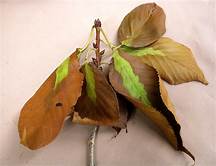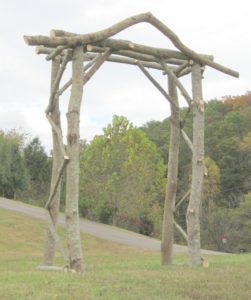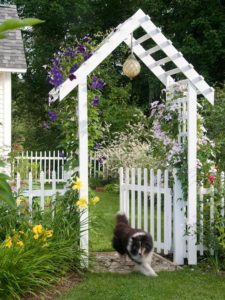Trees signal their water deficit through several symptoms. The most common changes in appearance are lighter green to yellow-green foliage, leaf scorch around the margins, wilting leaves and dropping them prematurely. Conifers will often produce an abundance of cones the second year of a drought. Trees that are stressed by drought are also more susceptible to insect borers and canker diseases.
Water Needs: Tree size & species
Just how much water does an established tree need during our hot summers? This depends on several variables, but two key ones are the size and species of tree. Almost all the water absorbed by a tree on a summer day is lost out of the leaves through transpiration. This process moves water from the roots, up through the trunk and branches and releases it as water vapor from small holes in the foliage. Only one or two percent of the water is used for meeting the needs of the tree for photosynthesis and other functions. While water is “lost” through transpiration that does not mean it was wasted. The water vapor from the leaf helps cool the foliage surface. A mature elm tree may have more than 150,000 leaves so the tree may transpire more than 100 gallons of water in a single sizzling summer day!
There are also differences among the many tree species in the amount of water they transpire. Conifers with their thicker, waxy needles lose less moisture than a broadleaf tree such as a linden or maple with their wide, thin foliage. However, the differences among tree species is not as important as its size. The larger the tree, the m ore water it requires.
ore water it requires.
Water Management
Trees required water during the summer and the general rule-of-thumb is they need about one inch of water per week. Unfortunately, rains are not that dependable in South Dakota and we can get three inches one day and nothing for the next two months.
Ideally this amount of water is provided to the tree every week, rather than double or triple the amount every two or three weeks. The water should also be applied slowly so that it soaks into the ground rather than runs off. The area to be watered should be from the trunk to a distance out equal to about half the height. While tree roots often extend as far out as the tree is tall, most roots are closer to the trunk.
Check to see if you are adding this amount, place an empty coffee can within the sprinkler zone and run the sprinkler until you have about 1 inch of water in the container. Also check to be sure the water is infiltrating the upper foot of the soil as this is the zone for most absorbing roots. After the first watering or two, dig a narrow hole by hand to a foot deep and check to be sure the soil is moist. If not, additional water may need to be applied or the water applied at a slower rate.



